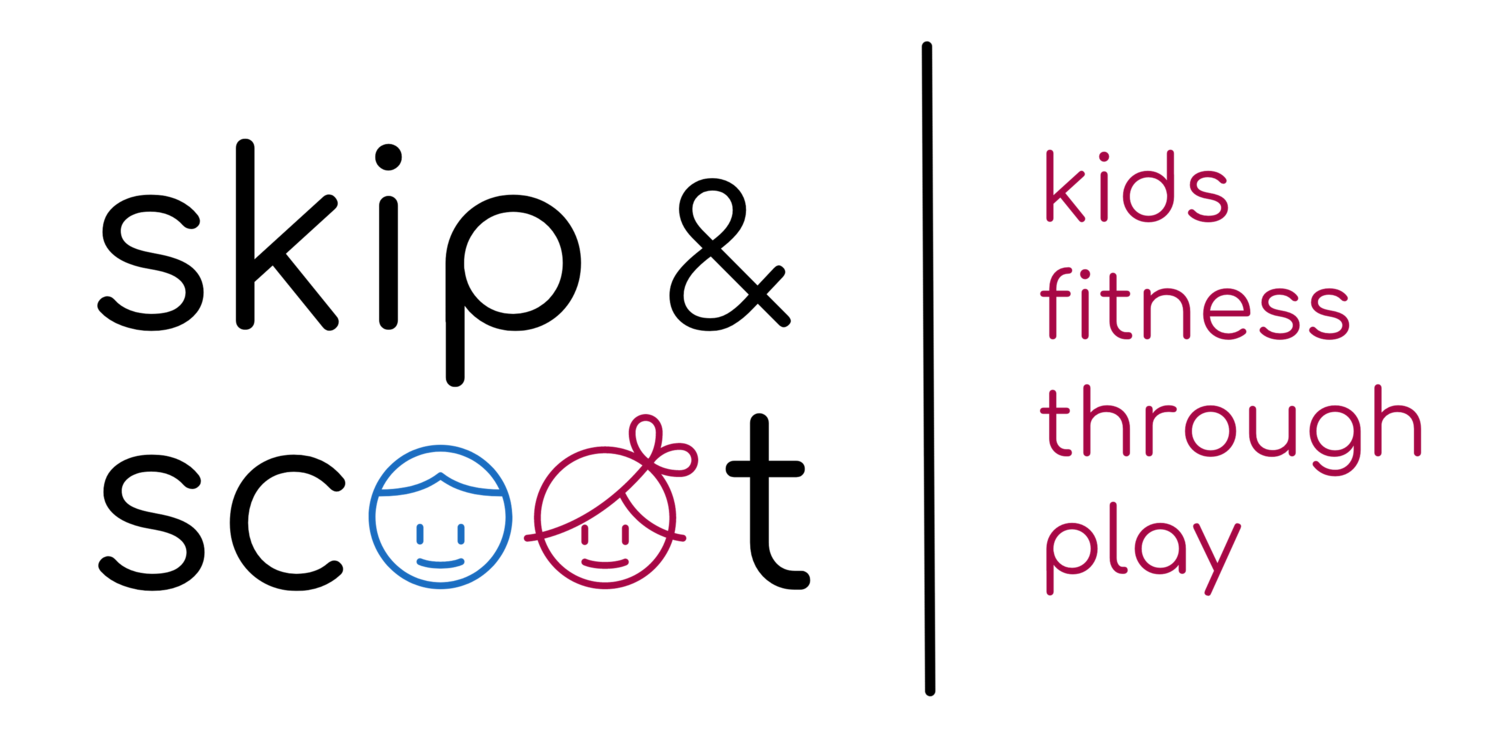My mission with Skip & Scoot is to give my tiny participants the best classes/sessions possible by moving and exercising their bodies and minds. As they move, they are building neural pathways, and truly learning through play. When all the adults in the room support this mission, classes run more smoothly and are more effective and fun for everyone!
But, sometimes it can feel awkward to physically assist a child if you haven’t been taught how to do it. Don’t worry! I’ve got you! Here are some tips for how best to facilitate physical learning for your babies, toddlers, and young children...
Break out your athleisure. Come to class wearing comfortable clothes yourself, ‘cus you’ll be moving, too. And, bring water for both of you!
Get right in there! Hands-on and specifically hand-over-hand assistance (literally placing your hands on top of theirs) for children is an excellent technique to teach new physical skills. Though it might feel like you’re “doing things for them” their brain is picking up and mapping the physical movements you’re guiding them through. These maps build neural connections that lead to physical skill mastery, after many practice trials with you and then on their own.
Modeling…is another significant way children learn! You might feel silly crawling under a ridiculously low hurdle or flying around the room like an airplane, but it’s so valuable for two big reasons. (1) It’ll likely help your child feel more comfortable trying the skill since they’re already comfortable with you and (2) they watch us closely and then emulate our actions. If you are stretching your arms out wide like an airplane, chances are they will too. If you are getting down low and crawling, they will too. Plus, it’s fun. Win-win.
Reinforce. The leader of the class will give age-appropriate directions, but most of the time kids need to hear these instructions more than once. This is where you can really help by repeating the directions and/or breaking dual-task directions into single-task ones (e.g. if the direction given is to “pick up a ball and put it in the bucket”, you can break it up by saying “pick up the ball” first and then, “put the ball in the bucket” after). And if they complete both tasks, successful learning is happening! To increase difficulty over time, you can add dual-task and triple-task directions (completing two and three tasks in a row) into your child’s daily routine to see if they’re ready. Soon, you’ll be saying, “Brush your teeth, go to the bathroom, put on your clothes, and meet me at the door!” and they may just do it!
Leave your hesitation at the door! I think sometimes as a parent we can feel like we want our children to be in the driver’s seat of their own learning and we don’t want to “do too much”. I understand the sentiment, but I’ve witnessed how much little people benefit from adult assistance and leadership. They observe and take in a lot everyday, so their brains are constantly growing and processing input and stimuli. Clear directions and boundaries in lessons can help a child feel and be safe while learning, allow them to evaluate their own skills based on your cues, and introduce them to new movements and physical possibilities. Also, giving too much leeway and freedom may lead to confusion. I’ve watched many times where a direction is given and a child sees something they’d rather do, so they go and do that other thing. Sometimes a child will gravitate towards a task that they have previously mastered because they can do it already and it’s easy! It’s our job to encourage kids to try new things beyond any discomfort that may arise. If they come out on the other side having mastered a new skill, their faces light up, they feel confident and proud, and their skill base grows.
Focus on your child, and focus on the activity. Ok, listen, I get it. I’m a parent too and we all need time to zone out. I’m right there with you! Seriously. But, at a mommy-and-me class? Probably not the best time. There have been parents and caregivers on phones throughout my class and it just doesn’t work well. Maybe I’ve pissed you off and you’re feeling like, Listen! Don’t judge me. I have to get work done and I’m a busy mom! And, you’re right! This post is not meant to judge anyone or make anyone feel like they’re doing anything “wrong”. If you need to do stuff, and we all do, then totally do it. But, it takes away from everyone’s experience if you do it in a child-oriented class because it’s a distraction for you and for them.
Bring the lessons and teachings home. In our classes, we work on various physical skills and do movement songs. I always encourage parents to practice anything we do in class at home because the more “trials”, or times a child practices a physical task, the closer they will get to mastery of that skill. If your child is practicing a skill incorrectly, help them with gentle corrections and guidance. They will no doubt love your attention!
Thank you for reading and I hope this was helpful! Feel free to email me with any questions! See you in class- let’s play and learn together!
